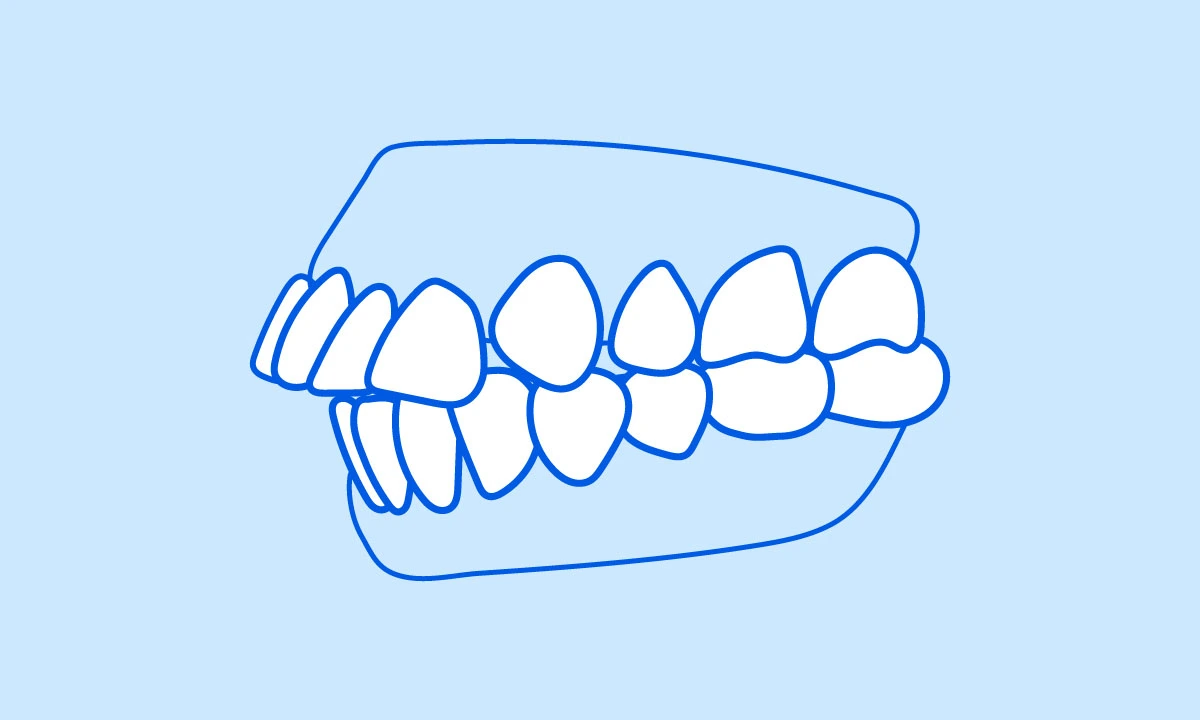Protruding teeth (also known as buck teeth) is one of the six teeth conditions that Zenyum Invisible Braces can help fix. But have you wondered what it really means?
There may be a couple of reasons why you may have protruding teeth – from genetics to habits you may have developed as a child. This article will cover possible causes, symptoms, potential issues and treatment for buck teeth.
This article is for informational purposes only and is not intended to be taken as medical advice. Please consult with your treating dentist for medical advice specific to your condition. Zenyum does not provide medical advice and our systems are doctor-directed treatments.
Causes of buck teeth
You’ll know you have buck teeth if you find that your upper front teeth protrude outwards over your lower teeth. There’s a few reasons why you may end up having buck teeth. Let’s find out why!
1. Thumb sucking
Sometimes, the poor habits we had as children can affect how our teeth develop. Thumb sucking actually applies pressure to your front teeth, pushing them outwards. As such, their natural position is shifted and this may lead to protrusions.
2. Tongue-thrusting
One more thing that could cause buck teeth is tongue-thrusting. This happens when your tongue presses too far forward in your mouth. While children normally do this, it is a poor habit that can carry on into adulthood.
3. Missing or extra teeth
If you’ve got a missing tooth, or additional teeth, this can affect your teeth alignment and result in you having buck teeth. Not having sufficient space for your teeth to move can also lead to alignment issues.
4. Genetics
In many cases, protruding or buck teeth are due to the underdevelopment of the lower jaw causing it to be shorter than the upper jaw.
Having missing, extra, or impacted teeth may even change the development of your jaw since your remaining teeth begin to shift; affecting the position of your front teeth, and leading to protrusions.
Symptoms of buck teeth
Having buck teeth can be unsightly and may make you feel self-conscious about showing your smile.
Here are a few symptoms you may experience that may urge you to get your buck teeth fixed:
- Your teeth won’t be aligned if you have buck teeth. As a result, you may need to chew with more effort, which can add unnecessary strain to your jaw.
- Because you’re chewing with more effort, this may cause your teeth to become thinner and weak. Nasty bacteria may also grow more easily too.
- Experiencing discomfort or strange clicking sounds when you move your jaw? These are symptoms of buck teeth, which can be a hindrance to your daily life.
- Find yourself having to repeat sentences over and over again? When you have buck teeth, you may speak more with your tongue, and can’t speak clearly or pronounce certain vowels. In more severe cases, you may develop a lisp.
Potential problems associated with buck teeth
A straight smile can boost your confidence. However, not everyone has naturally well aligned teeth. With buck teeth, you may experience several issues and problems like these:
- Difficulty chewing or eating
- Teeth grinding
- Problems with speaking
- Tooth fractures
- Low self-esteem
- Poor oral health
How to fix buck teeth
Fortunately, buck teeth are treatable by a dentist or orthodontist. The most common solution is braces, either traditional metal brackets and wires or clear aligners, like what Zenyum provides. These gradually shift the teeth into proper alignment over time.
For severe misalignment or jaw issues, surgery might be necessary to reposition the jawbone itself, as advised by your dentist. Early intervention is ideal, particularly for growing children, but adults can also achieve a straighter smile by wearing clear aligners.
Invisible Braces

Invisible braces is one of the ways that can help correct protruding teeth. As they apply pressure on your teeth to move them into new positions, your treating dentist may advise you to do Interproximal Reduction (IPR) to create space for your teeth to move.
Here are some pros and cons:
Pros | Cons |
|
|
Take our FREE Smile Check below and let us guide you on whether Zenyum Invisible Braces is the right choice for you!
Traditional metal braces
Here’s another way to get straighter teeth, and one that you may have heard of. Traditional metal braces have been around for some time as the go-to solution before clear aligners were available as a treatment options.
Of course, it might be more noticeable compared to clear aligners (as you’ll end up with a mouth full of metal!) but traditional braces do have their fair share of benefits.
Pros | Cons |
|
|
Veneers and dental bonding
Other ways to correct buck teeth would be veneers and dental bonding.
Veneers
Pros | Cons |
|
|
Dental Bonding
Pros | Cons |
|
|
FAQs about Buck Teeth
Can buck teeth be prevented?
It isn’t really possible to prevent buck teeth, since genetics do play a big role in whether you get buck teeth or not.
However, there are some best practices that parents and caregivers can instil to lower the risk of buck teeth in children. These include:
- Discouraging thumb sucking or the use of a pacifier
- Discourage tongue-thrusting
- Visit the dentist at an early age for an orthodontic assessment
- Schedule regular checkups for early detection and intervention
How long does orthodontic treatment take for buck teeth?
Unfortunately, there’s no one-size-fits-all answer to how long orthodontic treatment takes for buck teeth. It highly depends on your unique smile and what treatment your dentist prescribes.
ZenyumClear™ – designed for mild to moderate cases – takes an average of 7 months for treatment to complete. And for more complex cases that use ZenyumClear™ Extra, this takes an average of 15 months. To find out if you’re eligible for Zenyum, just click this link to have your smile checked for free!
Before and After: Buck Teeth

Here are the before and after photos of this Zenyum customer’s smile transformation!
From having buck teeth to a well aligned smile, this customer had a total of 30 aligner sets over 10 months, and only had to visit their dentist 4 times for fitting, mid-treatment check-ins and post-treatment review.
Find out if you’re a candidate for Zenyum
Delaying your clear aligner treatment could lead to more problems down the road. Start now to get your teeth aligned today!





